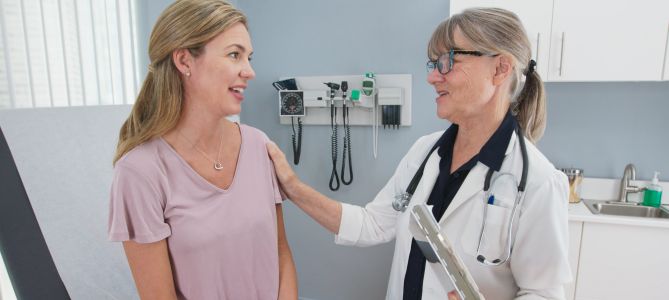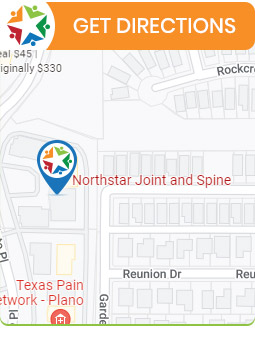Post-Surgery Pain Syndrome Treatment Specialist in Plano, TX
Post-surgery pain syndrome refers to persistent pain that continues after a surgical procedure, often due to nerve damage, scar tissue, or complications during recovery. This condition can lead to chronic discomfort, limiting daily activities and overall quality of life. At Northstar Joint and Spine, Board Certified Dr. Robert J. Nocerini, MD, provides specialized treatments to manage and alleviate post-surgery pain syndrome, improving recovery and function. For more information, contact us today or schedule an appointment online. We are conveniently located at 7704 San Jacinto Pl Suite #200 Plano, TX 75024.


Table of Contents:
What is post-surgery pain syndrome?
What causes post-surgery pain syndrome?
What are the symptoms of post-surgery pain syndrome?
When should I seek medical help for post-surgery pain syndrome?
Post-Surgery Pain Syndrome Treatment by Dr. Robert Nocerini at Northstar Joint and Spine in Plano, TX
Post-surgery pain syndrome refers to ongoing discomfort that continues well beyond the expected recovery period after a surgical procedure. Instead of gradually improving, the pain lingers, or in some cases, becomes more pronounced, despite the original surgical site healing as planned. This condition can involve a range of sensations, from burning or stabbing pain to deep aches or nerve-like tingling in the same general area where surgery took place. This may present with a persistent discomfort that can interfere with movement, sleep, and daily tasks long after the surgical wound has closed.
While it doesn’t occur after every operation, post-surgery pain syndrome can be a serious condition, particularly when it continues for several months and doesn’t respond to usual forms of recovery care. The pain may remain localized to one area or may radiate outward along a nerve pathway, often resembling the symptoms that led to surgery in the first place. It can sometimes overlap with neuropathic pain patterns, depending on how nerves near the surgical site were affected. The focus, then, becomes understanding the underlying source of that lingering discomfort so that treatment can be tailored accordingly.
The underlying causes of post-surgery pain syndrome are often complex, involving a mix of nerve irritation, inflammation, and in some cases, structural changes around the surgical site. Nerves near the area of the operation may become hypersensitive, either from direct contact during the procedure or from surrounding tissues healing in a way that places pressure or strain on them. Even when surgery is performed successfully and without complication, the body can react in ways that prolong discomfort or cause pain to return in a different form. Beyond nerve sensitivity, other contributing factors can include the development of scar tissue, inflammation that doesn’t fully resolve, or even muscular compensation that alters posture or mechanics around the treated area. In some cases, the nervous system remains in a heightened state of reactivity, interpreting even routine sensations as painful. That ongoing loop can make the original site feel tender or sore well after the tissues should have stabilized. The team at Northstar Joint and Spine works to identify whether the pain is due to lingering inflammation, nerve involvement, or other changes that need a more precise and directed approach.
Symptoms of post-surgery pain syndrome can vary widely from one individual to another, depending on the procedure performed and which part of the body was involved. Commonly, the discomfort tends to persist near the original surgical site, with patients reporting sensations such as stabbing, burning, sharp aches, or intermittent shooting pains. For others, it might feel more like a dull throb or a nagging tightness that doesn’t ease with time. The pain may stay confined to one spot or radiate outward, following the course of a nerve or affecting surrounding muscles.
There may also be added sensitivity in the area, with light touch or movement triggering a disproportionate level of discomfort. Some individuals notice that cold weather or certain postures bring symptoms to the surface more clearly. When these patterns remain unchanged despite the body having enough time to heal, it often signals that the pain has shifted from something temporary to something requiring more focused evaluation. The nature of this condition makes it distinct from the normal recovery experience and calls for a deeper look at what’s keeping the discomfort in place.
Medical attention should be considered when pain continues beyond what would be expected for the type of surgery performed, especially if it interferes with mobility, rest, or the ability to resume everyday activities. While some discomfort is common in the early stages of healing, pain that holds steady or intensifies several weeks or months after the procedure deserves a closer look. This is particularly true if the pain begins to follow nerve-like patterns, such as radiating into nearby areas or creating sharp, shooting sensations during movement. There’s also cause for concern when the pain feels out of proportion to the activity being done, or when previously manageable symptoms start to limit basic function. Waiting too long can allow those patterns to become more entrenched, making recovery more complicated over time. The specialists at Northstar Joint and Spine are experienced in evaluating persistent post-surgical discomfort and can help determine whether nerve involvement, inflammation, or other mechanical factors are contributing. The sooner the source is identified, the more targeted the treatment can be, and the better the outlook for restoring comfort and control.
At Northstar Joint and Spine, Board-Certified Dr. Robert Nocerini, MD provides specialized care for patients experiencing ongoing discomfort after surgical procedures. His advanced approach to post-surgery pain syndrome treatment focuses on restoring function, reducing chronic pain, and improving overall well-being through targeted, minimally invasive therapies. Dr. Nocerini emphasizes identifying the exact source of persistent pain to deliver precise, effective relief for each patient.
With over 26 years of experience in interventional pain management, Dr. Nocerini tailors every treatment plan to meet the individual needs of his patients. He integrates advanced imaging, nerve modulation techniques, and therapeutic interventions to provide long-lasting comfort. Patients appreciate his commitment to comprehensive follow-up care, ensuring gradual progress and restored confidence in everyday movement.
Post-surgery pain syndrome treatment is available at Northstar Joint and Spine. For more information, contact us today or schedule an appointment online. We are conveniently located at 7704 San Jacinto Pl Suite #200 Plano, TX 75024. We serve patients from Plano TX, Willow Bend TX, Frisco TX, Allen TX, Addison TX, North Dallas TX, and surrounding areas.

Check Out Our 5 Star Reviews


Additional Services You May Need
▸ Back Pain
▸ Chronic Pain
▸ Epidural Steroid Injections
▸ Spinal Cord Stimulation
▸ Viscosupplementation
▸ Genicular Nerve Blocks
▸ Facet Injections
▸ Joint Injections
▸ Sacroiliac Joint Injections
▸ Lumbar and Cervical
▸ Facet Medial Branch Blocks
▸ Diagnostic Nerve Blocks
▸ Medication Management
▸ Neck Pain Doctor
▸ Diabetic Peripheral Neuropathy
▸ Headaches
▸ Suboxone
▸ Botox for Migraines
▸ Peripheral Nerve Stimulation
▸ Spine
▸ Joints
▸ Muscles
▸ Bones

Additional Services You May Need
▸ Back Pain
▸ Chronic Pain
▸ Epidural Steroid Injections
▸ Spinal Cord Stimulation
▸ Viscosupplementation
▸ Genicular Nerve Blocks
▸ Facet Injections
▸ Joint Injections
▸ Sacroiliac Joint Injections
▸ Lumbar and Cervical
▸ Facet Medial Branch Blocks
▸ Diagnostic Nerve Blocks
▸ Medication Management
▸ Neck Pain Doctor
▸ Diabetic Peripheral Neuropathy
▸ Headaches
▸ Suboxone
▸ Botox for Migraines
▸ Peripheral Nerve Stimulation
▸ Spine
▸ Joints
▸ Muscles
▸ Bones






